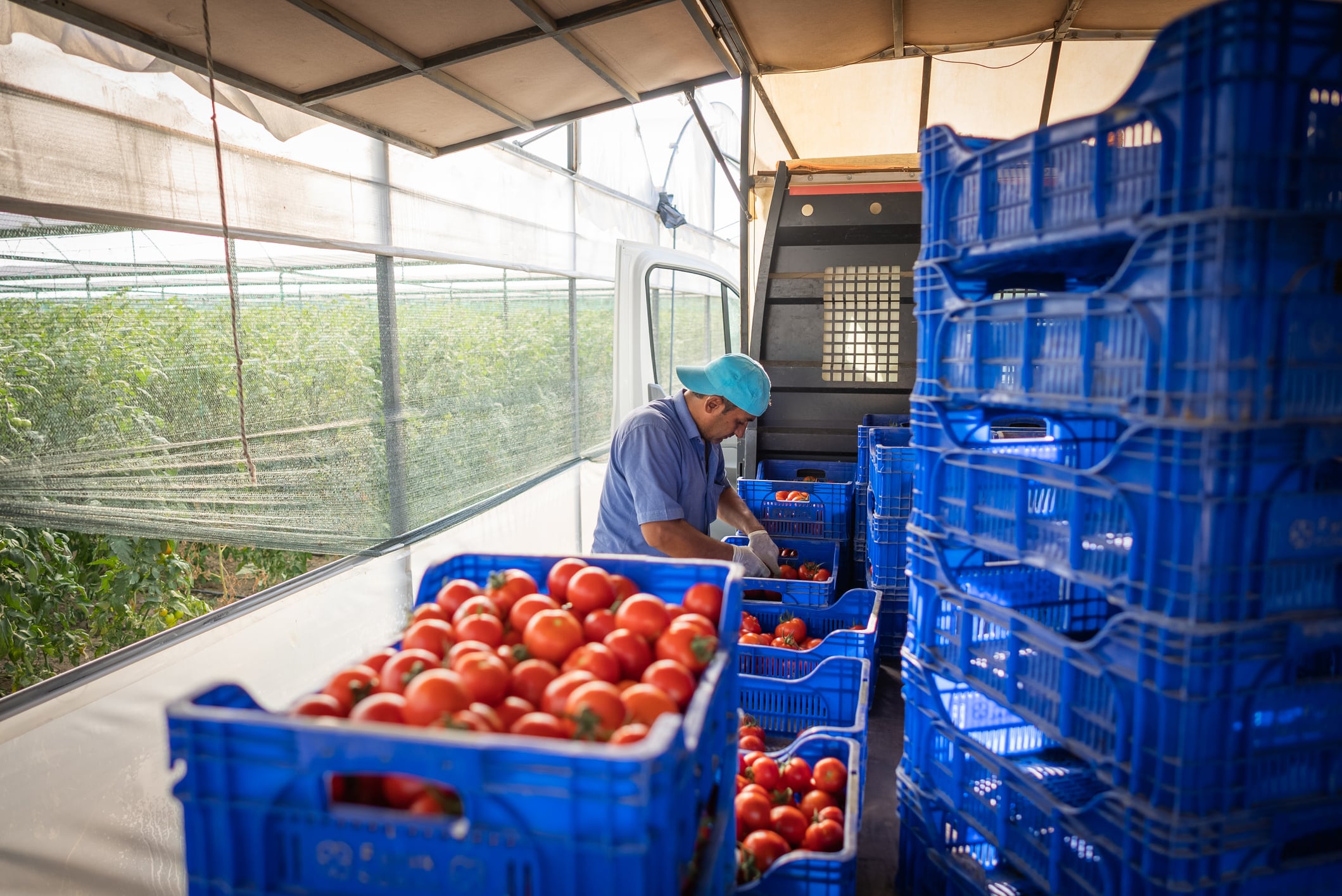Geopolitical tensions, outdated policy frameworks, and the financial fragility of producers are creating a perfect storm that threatens to stall progress across the US food and ag value chain, says an investor.
While there is ongoing momentum in ag innovation, investors are also seeing it collide with some very real, very structural headwinds, reported Brett Wong, partner, Anterra Capital, speaking to this publication at the Animal AgTech Innovation Summit in Dallas last month.
Policy missteps and market fallout
Tariffs are a blunt instrument, a terrible mechanism, he stressed.
“Costs are rising - and it’s hitting farmers hard,” commented the investor. “I spoke with several US livestock and crop producers recently, and they’re already seeing contracts with China get canceled.”
It’s déjà vu from the last time tariffs were in play.
He continued: “People seem to forget - or maybe they just want to forget - that during Trump’s first term, the US government had to bail out soybean farmers with direct payments. That’s exactly what we were trying to move away from with policies like the Renewable Fuel Standard (RFS).”
“Whether or not you agree with the RFS, the point of it was to replace direct handouts with market-based incentives. It worked - corn prices went up by 40%, and that helped farmers stabilize their bottom line without relying on subsidies.”
Wong emphasized the need for smarter policy tools: “We need to ask ourselves - how do we support the US ag sector in a way that’s sustainable? How do we create incentives that actually help farmers make a living, without falling back on direct handouts?”
What was happening during Trump’s first term and what is reoccurring again now is China doubling down on Brazil, said Wong.
“Talk to any Brazilian farmer and they’ll tell you: China is investing heavily in Brazil’s agricultural infrastructure.”
The Asian behemoth is funding ports, roads, storage facilities - everything needed to scale up production and exports. “That’s what transformed Brazil into the ag powerhouse it is today.”
China wants grains and protein. In exchange for infrastructure investment, it gets long-term, direct access to those goods. It’s a strategic play, and it’s working, added Wong.
“Meanwhile, the US is at risk of being left behind - sitting on massive surpluses of agricultural goods.”
Innovation adoption
Wong emphasized that these disruptions don’t just hurt exports - they slow innovation adoption.
“We have to ask: how do we insulate ourselves from the immediate headwinds - geopolitical tensions, market disruptions, policy shifts - while still tackling the deeper, structural challenges that innovation is trying to solve?”
“New technologies promise greater farming efficiency, new revenue streams, and smarter ways to operate. That’s exactly where we focus our time and capital: investing in innovation across agriculture and animal health.
“But it’s impossible to ignore the policy landscape. Because if farmers aren’t making money, they can’t adopt new tools. And if they can’t adopt innovation, the entire system slows down.”
He added that many investors from outside agtech underestimate the complexity of the customer base. “Farming is one of the hardest, most nuanced jobs in the world. And we’re seeing a generational shift - young people are leaving rural communities because the economics just don’t work.”
Scalability and fit-for-farm conditions
“There’s no shortage of good ideas in agtech,” Wong said. “But many of them fail in real-world conditions.
“Take computer vision in livestock, for example,” he remarked. “We’ve seen companies build impressive systems, but some of them were genuinely surprised by how dusty barns can be.”
“We’ve seen similar issues in aquaculture,” he added. “Some tech teams didn’t anticipate how murky the water could get. But that’s the reality of working in real-world farm conditions. These are things we need to understand and design for from the start.”
“There’s no shortage of great ideas and promising technologies coming to market,” Wong continued. “But the real challenge is getting them on-farm - making sure they work for the farmer, the consumer, the supply chain, and the company building the tech.”
Until that gap can be bridged - between innovation and practical, profitable adoption – Wong said there will be ongoing friction in the system.
Sensors, tags
“There are definitely some exciting opportunities on the innovation side - especially when it comes to using AI in meat processing,” said Wong. “We’re seeing tools that can optimize carcass breakdown, reduce waste, and improve cut precision. That’s real value creation, both for processors and the broader supply chain.”
When it comes to sensors on farm, there’s a real nuance in how they need to be built, deployed, and maintained, he said.
“Sensors are incredibly hard to get right, especially in agriculture,” said Wong.
While AI and sensor technologies are improving all the time, when you try to apply them in rugged, real-world farm environments, it’s a whole different ballgame, he argued.
“Another challenge is the economics,” he continued.
Farmers need a sensor that’s tough enough to survive on-farm, smart enough to deliver meaningful insights, and affordable enough that they are willing to pay for it.
And that price point still must support the company making it - and any distributor or service provider in between, said the investor.
Additionally, he reflected on the field of herd tracking - collar systems, mesh networks, biometric tags. “It all sounds great, and there are probably a hundred companies working on it,” he continued. “But the reality is, the value proposition just isn’t there yet for most producers.”
“Take biometric tags. Long-term, I think they could be incredibly valuable. But right now, the data they provide is limited - temperature, movement, maybe a few other basic metrics. That’s not enough to drive real valuable intervention and justify the cost for most farmers.”
“Think about it this way: anyone with a smartwatch can get real-time heart rate, rhythm, sleep tracking - actionable insights. But in livestock tech, we’re still at the stage of saying, ‘Your cow moved today.’ That’s not a signal. That’s background noise.”
“Until these tools deliver insights that drive decisions, they’re not going to see widespread adoption.”
Meat consumption trends, antibiotics
On the protein side, Wong sees more promising macro trends in poultry and fish. “Protein consumption is growing in developing regions - Asia, Africa. It’s declining in places like the US and EU,” he said.
He noted that the US poultry sector is uniquely positioned due to its consolidated market structure and can be appealing for agtech companies. “It’s hard to break in as a producer, but if you’re an innovator, it can be a more efficient market to access,” he explained. “However, if the big players don’t want what you’re offering, that consolidation can also be a wall.”
Wong also spoke about the US poultry industry’s shifting stance on antibiotics. “Consumers have been pushing back on growth antibiotics, but now even QSRs like Chick-fil-A are starting to say, this isn’t economically sustainable. They are allowing the use of certain antibiotics, including ionophores, that are not considered medically important for humans.”
He pointed to a broader opportunity: “Why don’t we go figure out animal-specific antibiotics? That could help address resistance without affecting human health. We have great drug discovery platforms. It is technically difficult, but that’s one of the things we’re focused on.”
However, the market incentives for pharma companies remain misaligned. It’s really hard to justify investment in animal-specific antibiotics - they’re unlikely to get paid much, and the regulatory and public pressure is high, said Wong.
Funding models
In that context, he also talked about a central, systemic barrier: funding models.
Asked about whether the venture capital approach is sustainable when it comes to animal agtech, because of the long-term timeline required, he said:
“I don’t disagree with the concerns around venture funding - but the question remains: if not venture, then what?” said Wong. “Public-private partnerships are part of the answer, sure. But how far can they really scale? How consistent is that support across the ecosystem?”
“Corporates have played a vital role, whether through CVCs or direct investments, but their involvement tends to ebb and flow with market conditions. That’s the reality. If you’re a startup trying to scale, you can’t rely on a funding source that might disappear the moment the market turns.”
Consistent, reliable capital is needed to scale innovation in agriculture and animal health, he outlined.
Look at public funding. Grants are helpful, but they’re hard to get, and rarely provide the kind of sustained capital needed to scale a company, he said.
Foundations like the Gates Foundation have done incredible work - especially in developing regions - but even they have limits. They’re tackling massive global challenges, and agriculture is just one piece of that puzzle, according to Wong.
“Academia plays a role too - offering research support, trial access, and market insights - but they’re not in a position to provide capital. So, when you look across the landscape -corporates, public funding, philanthropy, academia - none of them offer the kind of consistent, scalable funding that innovation truly needs.
“That brings us back to venture. Yes, it has its flaws. The timelines are long, the risk is high, and the return expectations can be misaligned with ag’s slower cycles. But until there’s a better alternative, it remains one of the only vehicles capable of funding the kind of transformative innovation this industry needs.”





